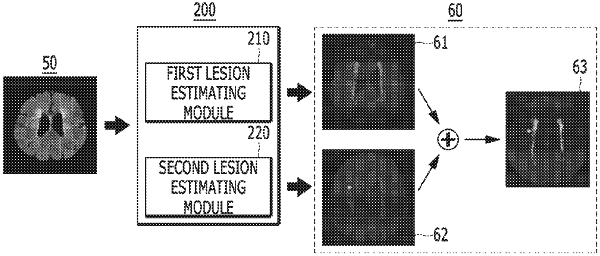| CPC G06T 7/11 (2017.01) [G06T 2207/10024 (2013.01); G06T 2207/10088 (2013.01); G06T 2207/20081 (2013.01); G06T 2207/20084 (2013.01); G06T 2207/30016 (2013.01); G06T 2207/30096 (2013.01)] | 12 Claims |

|
1. A method for detecting white matter lesions based on medical image, performed by a computing device including one or more processors, comprising:
receiving a medical image including at least one brain region; and
generating information for estimating a first white matter lesion and a second white matter lesion based on the medical image using a pre-trained neural network model,
wherein the generating the information for estimating the first white matter lesion and the second white matter lesion includes:
extracting a brain region including white matter from the medical image, wherein the brain region is a region from which a bone region of the brain has been removed; and,
generating first information for estimating the first white matter lesion based on the medical image, using a first lesion estimation module included in the neural network model; and
generating second information for estimating the second white matter lesion based on the medical image, using a second lesion estimation module included in the neural network model,
wherein the first information is generated based on the extracted brain region, using the first lesion estimation module and the second information is generated based on the extracted brain region, using the second lesion estimation module.
|